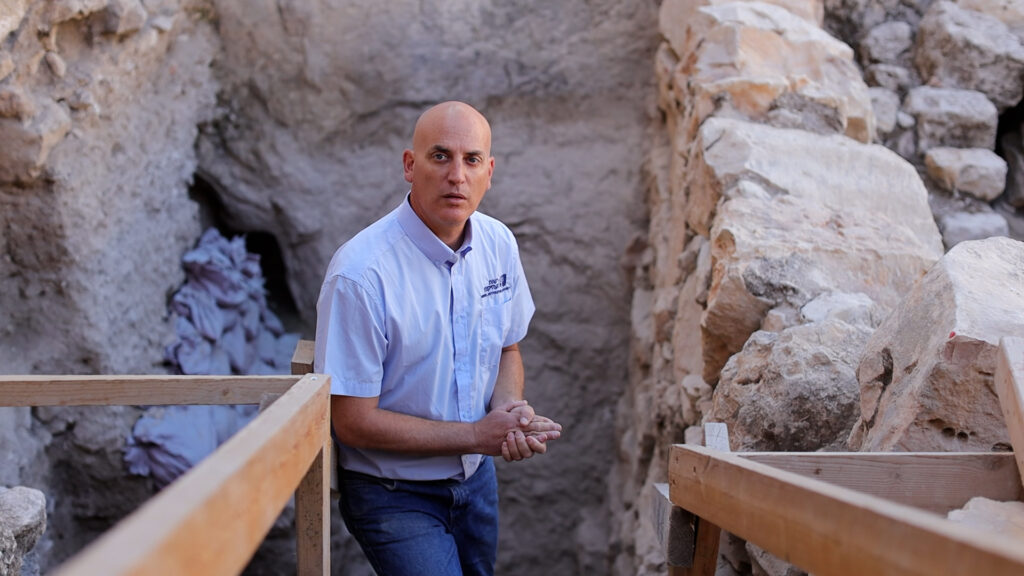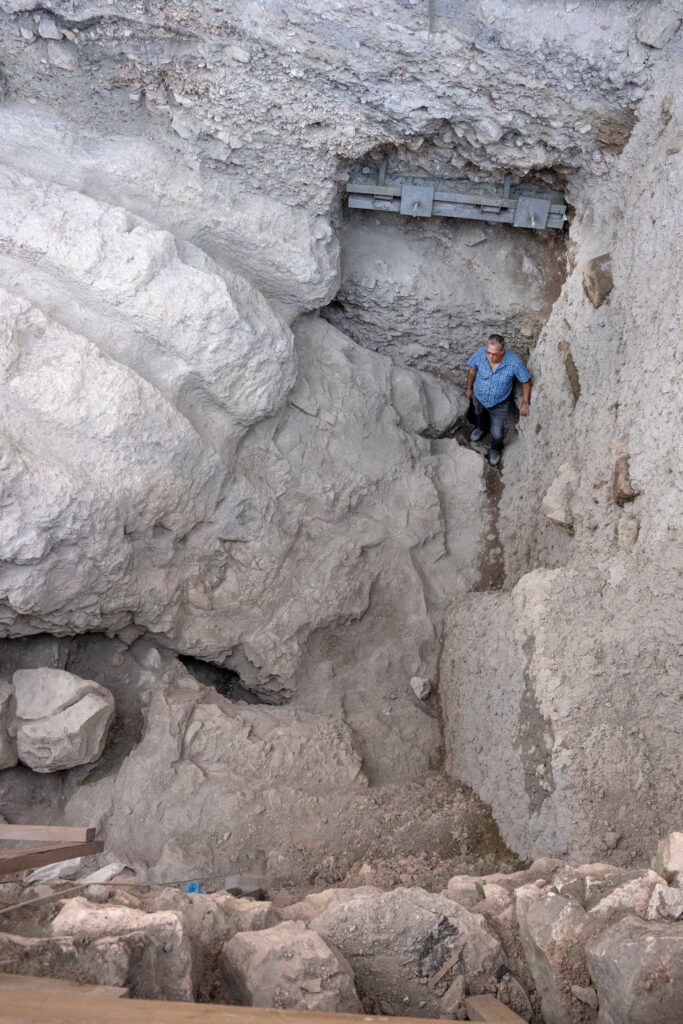Archaeologists from the Israel Antiquities Authority (IAA) and Tel Aviv University (TAU)have made a groundbreaking discovery at the City of David in the Jerusalem Walls National Park. They have unearthed a massive moat, at least nine meters deep and 30 meters wide, which has eluded researchers for over 150 years.

Section of the monumental fortifications which protected the kings of Jerusalem. Credit: Eliyahu Yanai, City of David
This monumental fortification, revealed during excavations at the Givati Parking Lot, is believed to have separated the upper city, home to the temple and palace, from the lower city. The moat likely served as a crucial defensive structure for ancient Jerusalem.
Professor Yuval Gadot from Tel Aviv University and Dr. Yiftah Shalev from the IAA, who led the excavation, suggests that the moat dates back to the Kingdom of Judah, potentially 3,000 years ago. They believe it was used during the reign of King Josiah and subsequent periods.

Dr. Yiftah Shalev of the Israel Antiquities Authority in front of a section of the moat . Credit: Eliyahu Yanai, City of David
King Josiah, who ruled Judah from approximately 640 to 609 BCE, is primarily known in biblical accounts for his religious reforms rather than military exploits. However, the Bible provides some insight into his reign’s geopolitical context. According to 2 Kings and 2 Chronicles, Josiah took advantage of the declining Assyrian Empire to extend his influence northward into the former territory of Israel. While not explicitly described as wars, these actions suggest military or, at least, political confrontations. The most significant military event associated with Josiah was his death. According to 2 Chronicles 35:20-24, Josiah was killed in battle at Megiddo when he intercepted Pharaoh Necho II of Egypt, marching north to aid the Assyrians against the rising Babylonian threat. This engagement, while not a war Josiah initiated, proved to be his last and most consequential military action, dramatically altering the course of Judah’s history.
The creation of this moat was a significant engineering feat, demonstrating the power and capabilities of Jerusalem’s ancient rulers. It reshaped the natural topography, creating a formidable barrier between the southern residential area and the northern Acropolis.
This discovery has prompted researchers to reexamine previous excavations, including those conducted by British archaeologist Kathleen Kenyon in the 1960s. The combined findings reveal that the moat extends at least 70 meters from west to east.
While the exact date of the moat’s creation remains unknown, it is believed to have been used during the First Temple period and the Kingdom of Judah (ninth century BCE). The discovery sheds new light on biblical references to Jerusalem’s topography, such as the Ophel and the Millo.

Prof. Yuval Gadot of the Tel Aviv University next to the northern side of the moat which protected Jerusalem, and alongside him carved bedrock channels. Credit: Eric Marmur, City of David.
Eli Escusido, Director of the IAA, emphasized the significance of this find, stating that it provides “new and vivid light on the biblical literature.”
The excavation results will be presented at the upcoming “Jerusalem Studies Experience” Conference at the City of David in early August, offering scholars and enthusiasts a chance to delve deeper into this remarkable discovery that reshapes our understanding of ancient Jerusalem’s urban landscape and defensive strategies.




